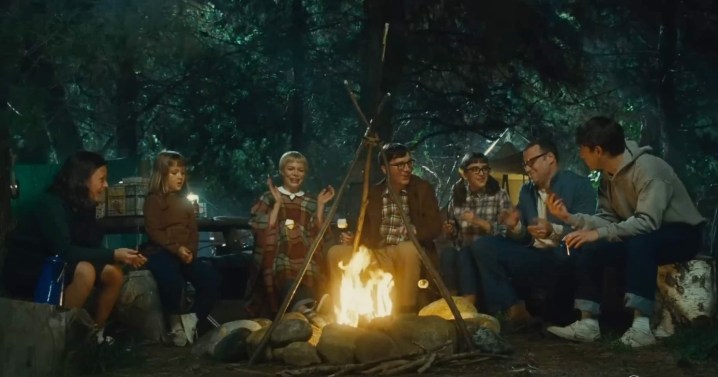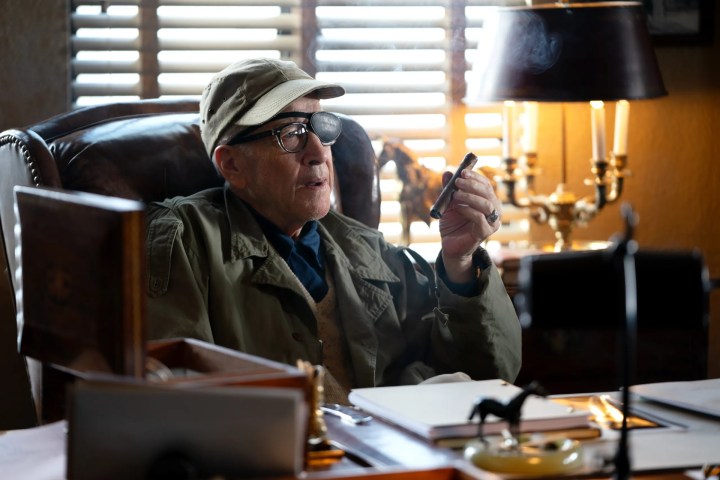
How to recreate the look of your youth? That’s the dilemma that faced Steven Spielberg as he started to put together his autobiographical film, The Fabelmans. In telling a thinly veiled fictionalized account of his formative years in Arizona and, later, California, Spielberg relied on his usual collaborators — composer John Williams and cinematographer Janusz Kamiński — to help him out. Yet when it came to reconstructing what he and his family actually looked like during the 1960s, Spielberg reached out to a veteran costume designer Mark Bridges to recreate a pivotal time in the director’s personal history
A previous Oscar nominee for his work on Phantom Thread, Bridges sat down with Digital Trends to talk about how his collaboration with the famous director, who his favorite character to design for was, and how he managed to work with Blue Velvet auteur David Lynch without ever actually meeting him.
Note: This interview has been edited for length and clarity.
Digital Trends: Costuming for period movies can be a challenge, but with The Fabelmans, you had the additional challenge of costuming for characters that are drawn from the director’s personal life. How did you approach making the costumes for this movie?
Mark Bridges: At first, it was very intimidating because you want to do it justice. And I think at the first meeting I had with Steven, he mentioned that his mother, Leah Adler, had a very unique style. And I kept thinking, “What could that be?”

There were a lot of pictures of her on Google and we had access to Steven’s family, so I researched her the way that I would research Dwight D. Eisenhower or Jackie Kennedy. I found out her tastes over the years and the throughline of her style, the things that she preferred to wear, and how she represented herself from the late forties to the sixties and seventies. I did research outside of the timeline of the film as well to complete the overall picture.
I also had the benefit of talking to Steven’s sisters on a conference call so I could ask them, “What do you remember about your mother’s style?” The oldest daughter was the one who remembered the most. Of course, the younger daughter only remembered the period after The Fabelmans took place. I then had to cherry-pick and select what would be appropriate and timely for each scene.
What was fun about working with Steven was that occasionally, I would surprise him with something that he had forgotten about. For example, we were shooting the scene around the campfire [with the entire family] and I hadn’t told him that I was going to use a blanket poncho that his mother had actually designed in the ‘60s. I made one for our Mitzi, Michelle Williams, and when she showed up on set, you could see that he was touched and was taken right back to that moment.

And, you know, no words were exchanged between us, but I knew that I had evoked a lovely memory for him in that scene. I enjoyed working with Steven in that way. Several times there was something that I just wanted to present to him that would conjure a memory of his, and it was quite satisfying when it did.
Were there any costumes that when Spielberg looked at them, he didn’t want to use because he knew his family never wore those kinds of clothes in real life?
Yeah. In one of our first meetings, he said that he never wore shorts as a teenager even though they were living in Arizona during that time in his life. That was really good to know because I used that information to design his Boy Scout uniform, which he wears all the time. When he’s directing his early war films with his friends out in the hot desert, he’s wearing pants. Why? Because Steven thought that made him look like a leader. It’s not a weak look like wearing shorts would be to him.

You’ve worked with a lot of directors over the years, in particular, with Paul Thomas Anderson. What’s the difference between working with a director like him versus Spielberg with The Fabelmans?
I have a process and a way to bring the director’s vision to life. With Paul, I would read really early versions of the script and then sit down with him in his office and listen to music and look at films and books. That’s what we did with something like Phantom Thread. With Steven, the script for The Fabelmans was already done by the time I became involved with the movie. It was presented to me pretty much complete so I took the ball and ran with it.
My experience on The Fabelmans was a little more truncated than the time that I usually have had on Paul’s films. With Steven, you’re working more with the immediate research and the immediate gut and availability with him. With Paul, sometimes we have a couple of years to think about the movie and adapt accordingly.
Who was your favorite character to work on in The Fabelmans?
Probably Sam as a teenager. He was the most fun for me to design for as a character.
David Lynch stars as John Ford in a short cameo at the end of The Fabelmans. How much of Ford did you capture with his look and did Lynch or Spielberg have any input in the finished product?

Well, that’s a funny story. I feel like I did justice to John Ford. I mean, he was such a notoriously bad dresser that The New York Times mentioned how notoriously of a bad dresser he was in his obituary.
Because we shot The Fabelmans during COVID, David asked that we just send things over to his house and leave them on his porch. I put together what I thought would be the “John Ford look.” He tried it on, took a photo of himself in the costume, and gave us feedback like “oh, these shirt sleeves are a little short” or “the jacket is a little short” or whatever. So we took his feedback and altered the costume to his specifications.
When Steven saw the photo of David Lynch as John Ford, he really enjoyed it. I never actually met David, unfortunately.
So if David Lynch asked you to costume design for Mulholland Drive 2, you would accept in a heartbeat.
Of course. You know I love period movies.
All right, let’s do it. Let’s make that happen.
Nominated for seven Oscars including Best Picture, The Fabelmans is available to rent at every major digital outlet.
Editors’ Recommendations


